





(Editor's Note: This article was originally published on May 29, 2009. Your comments are welcome, but please be aware that authors of previously published articles may not be able to promptly respond to new questions or comments.)
Gardeners in temperate zones are often discouraged when they try to grow lettuce. Just as soon as the heads are almost ready to harvest and enjoy, a heat wave invariably comes along and the lettuce bolts and goes to seed, turning bitter.
While you may not be able to grow lettuce at the height of an Arizona summer, there are several ways to improve your chances of getting a good, long crop of lettuce for your salads. There are two keys to lettuce-growing success in warm weather: gardening practices and selecting the right varieties.
GROW IT RIGHT: Start Early
Lettuce is a cool-season crop. It can withstand some frost. You can get a head start on the crop before the warm weather shows up by sowing as early as possible. But for an even greater advantage, consider starting the seeds inside, or in a coldframe, to set out in the garden later, when your soil is ready to work. Lettuce transplants well.
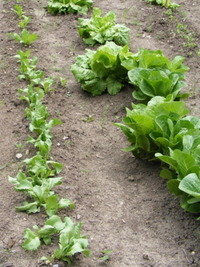 Grow It Fast
Grow It Fast
Give your lettuce the conditions in which it will grow rapidly. Apply a fertilizer high in nitrogen. (I like to use a side-dressing of blood meal, as I cling to the belief that it repels rabbits.) Keep the soil moist, as lettuce is mostly water. And give it room. Lettuce doesn't like to be crowded. Don't sow the seeds too close together and keep them thinned so there is always space between each plant. Iceberg-type lettuce in particular is susceptible to rotting in warm weather if crowded. The thinnings are good as baby lettuce in early salads.
Pick It Young
Lettuce is edible at any stage of its development before it goes to seed, and young lettuce is tender and delicious. Lettuce plants go to seed when they are mature, so rather than leaving the heads standing to reach maximum size, pick them early and make succession plantings to assure a continuous harvest. An alternative method, particularly for leaf lettuce, is to cut the young leaves from the plant, which will continue to produce new ones.
Give It Shade
You can extend the growing season for lettuce by shading the bed. Lettuce does not require full sun in the summer; in fact, it is susceptible to sunscald. Installing shadecloth or planting a taller crop to partially block the sun will keep your lettuce cooler and going longer before it bolts.
Consider Containers
Lettuce is a good choice for growing in self-contained planters. These generally result in rapid growth of crops and can be positioned to take advantage of shelter and shade, with a growing medium that is always ready to go, instead of waiting for the soil to dry out.
CHOOSE THE RIGHT VARIETIES
Leaf: A lot of gardeners limit themselves to leaf lettuces and consider the heading varieties too hard to grow. Leaf lettuces do have some advantages. They grow quickly to usable size. They are suitable for "cut and come again" harvesting. They came in a wide variety of shapes, colors and textures.
But not all leaf lettuces are equal in heat resistance. Instead of buying the same old standards, look through PlantScout and the seed catalogs for new varieties bred to stand longer in hot weather without bolting. Last year, I had good results growing two new leaf lettuces: 'New Red Fire' and 'Tropicana' (heat resistant varieties often have such names).
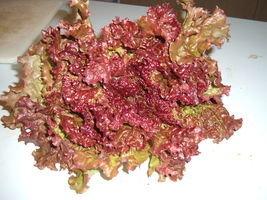
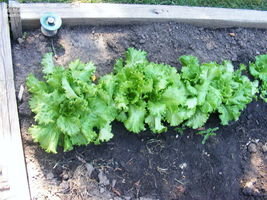 New Red Fire
New Red Fire
Iceberg: In contrast, iceberg-type head lettuce is regarded as about the hardest to grow successfully, and many people don't even attempt it. One problem is that it takes longer to maturity than other lettuces. But a variety like 'Summertime', bred for heat resistance, will still be green and crisp while older icebergs have gone all brown and slimy.
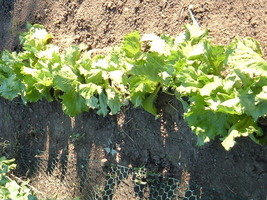
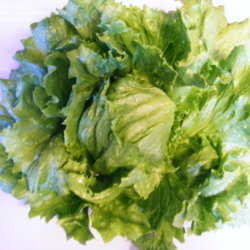 Summertime
Summertime
Butterhead: The Bibb and Boston types were not traditionally known for standing the summer heat very well, but breeders have now changed that. 'Ermosa' was the first commercially-successful butterhead; 'Adriana' is a newer version of this lettuce.
Another choice is the mini-butterhead type, such as 'Tom Thumb'. These miniature lettuces mature in a shorter time than the full-sized heads, allowing a quick crop before the heat turns deadly.
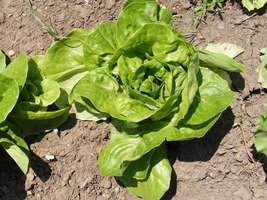
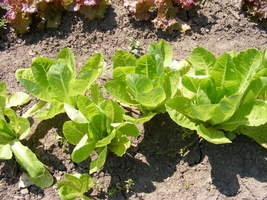 Adriana
Adriana
Romaine: Romaine may be the most popular type of lettuce now, with dozens of new varieties, including red ones. 'Jericho' is one variety bred for heat-resistance. There are also mini-romaines for quick growth.

Batavia: This type of lettuce is better known in Europe than in the Americas. It is also known as French Crisp or Summer Crisp, which suggests that it stands the heat well. I grew 'Nevada' last year and was totally converted to this kind of lettuce, with a loose head somewhat like a butterhead, but a crisper texture. 'Anuenue' is a Hawaiian variety with a good reputation for withstanding hot weather.
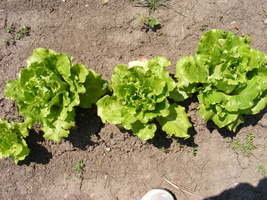
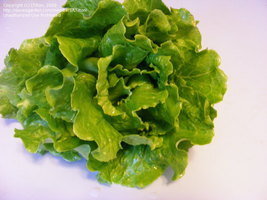
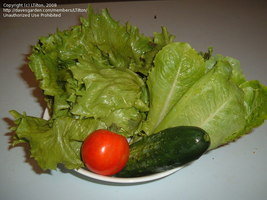
These are all lettuces that I grew in my own garden last year in July, in the heat of an Illinois summer. I hope they inspire other gardeners to grow their own head lettuce. When you sit down to your own home-grown salad, you'll be glad you did.
Copyright © www.100flowers.win Botanic Garden All Rights Reserved